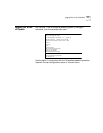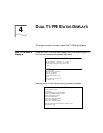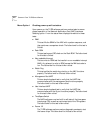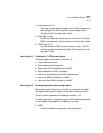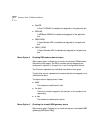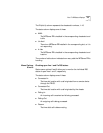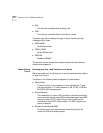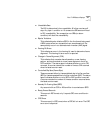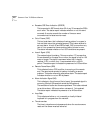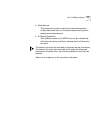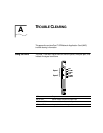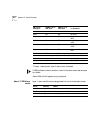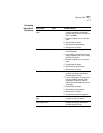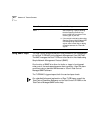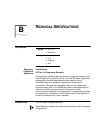
4-8
C
HAPTER
4: D
UAL
T1/PRI S
TATUS
D
ISPLAYS
■
Excessive CRC Error Indication (ECRCEI)
This is reported in ESF format when 32 of any 33 consecutive CRCs
are in error. The status report indicates whether or not this event
occurred. A counter records the number of times an event
occurred since the latest counter reset.
■
Out of Frame (OOF)
This is a local alarm that indicates a framing pattern for a span is
lost and data cannot be extracted properly. This is also referred to
as a red alarm. In both SF and ESF formats, OOF occurs when any
two of four consecutive frame synchronization bits are in error.
The status indicates whether or not OOF conditions are present.
■
Loss of Signal (LOS)
The received signal is missing. This occurs when 175 consecutive
0’s are detected on the span line or when the signal is lost for 150
msec or longer. The signal is recovered when the 1’s density
reaches 12.5% or when four 1’s are received within a 32-bit
period. The status report indicates the presence of a LOS condition.
■
Remote Frame Alarm (RFA)
This indicates that an OOF condition is occurring at the remote
end. The remote end sends a bit pattern indicating a remote
problem. This is also referred to as a yellow alarm. The status report
indicates whether or not an RFA is present.
■
Alarm Indication Signal (AIS)
This indicates to the other end that a loss of the received signal is
occurring (Central Office switch sends the AIS patterns).
The remote end is alive but there are problems. This is also referred
to as a blue alarm. AIS occurs when a stream of 1’s is received.
The status report indicates the presence of an AIS condition.
■
Loop Back
This indicates whether or not a remotely or locally initiated
loopback is in progress from the network.
■
Time since clear
The time in days:hours:minutes:seconds since the counters were
reset and the screen was last looked at.



